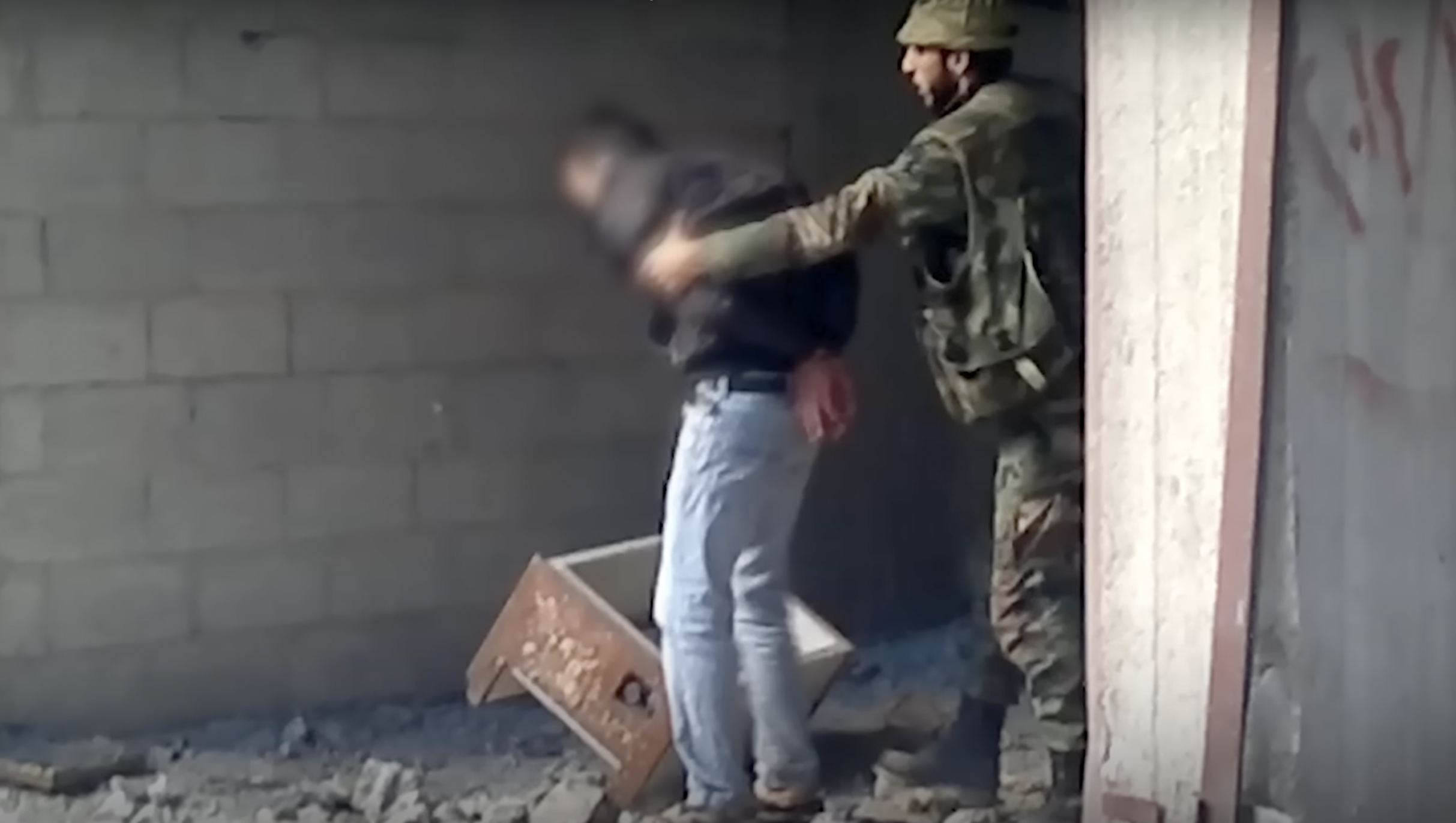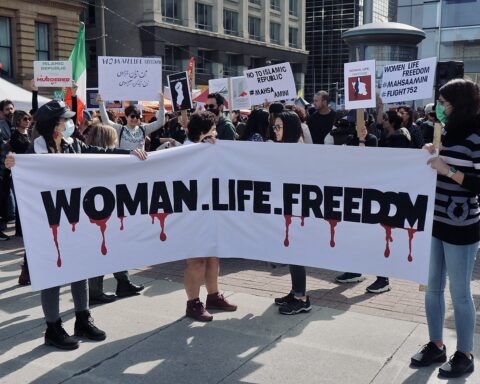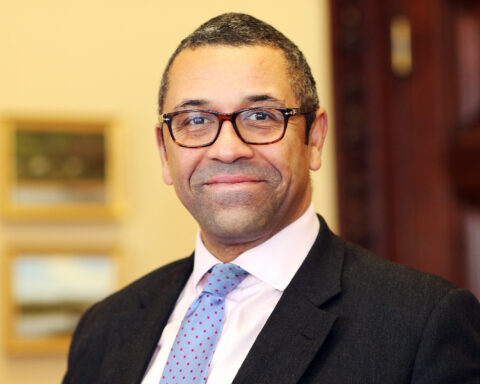DAMASCUS (Parliament Politics Magazine) – This is the story of a war crime captured in real time by one of the Syrian regime’s most infamous enforcers, branch 227 of the military intelligence service of the country, as well as the painstaking efforts to expose the offenders which includes how two researchers in Amsterdam tricked one of Syria’s most notorious security officers into revealing the sinister secrets of Assad’s war through an online alter ego.
Warning: contains graphic images
Their investigation has shed new light on atrocities that were previously thought to have been committed by the regime at the height of the Syrian conflict but were either denied or placed on rebel groups and jihadists.
In the video posted by the Guardian (see above), the camera zoomed in on a recently excavated pit on the dirt between two bullet-pocked building shells. An intelligence officer in military fatigues and a fishing hat sitting near the hole’s edge, wielding an assault rifle and yelling orders.
A blinded man was dragged by the elbow and forced to run towards the massive pit that lay in front of him. He hadn’t counted on bullets slamming into his writhing body as he tumbled upon a heap of dead men underneath him. More unwitting inmates arrived one by one; some were persuaded they were fleeing a nearby sniper, while others were humiliated and tormented in their final moments. Many people seemed to feel that their assailants were guiding them to safety.
At the time of the execution, at least 41 men were buried in a mass grave in the Damascus suburb of Tadamon, which was a battleground in the struggle between the Syrian leader and insurrectionists aligned against him. The killers poured fuel on the remains and burned them beside stacked heaps of soil that would soon be used to finish the job, laughing while literally covering up a war crime just a few kilometres from Syria’s seat of power. The video was stamped- April 16, 2013.
Syria’s security forces learnt the tactics of intimidation from Soviet and Stasi officers in the 1960s. Fear was the regime’s most lethal tool for clinging to power, and it utilised whatever means at its disposal to instil it. In this case, the victims were civilians who were neutral, rather than insurgents and had accepted Assad’s protection. Their assassinations were seen widely in Tadamon as a warning to the entire suburb: “Don’t even consider opposing us.”
The source needed to get over the fear of being caught and likely killed, as well as the distress of being potentially cast out of his family – important figures of Assad’s Alawite sect, which has in control the main reins of power in what remains of Syria – in order to leak the video, first to an opposition activist in France and then to Annsar Shahhoud and Prof Uur Ümit Üngör of the University of Amsterdam’s Holocaust and Genocide Centre.
Even as hundreds of individuals around the world tried to bring Assad to justice for war crimes, he would eventually understand that the video would end up being a key piece of evidence in the case against him.






